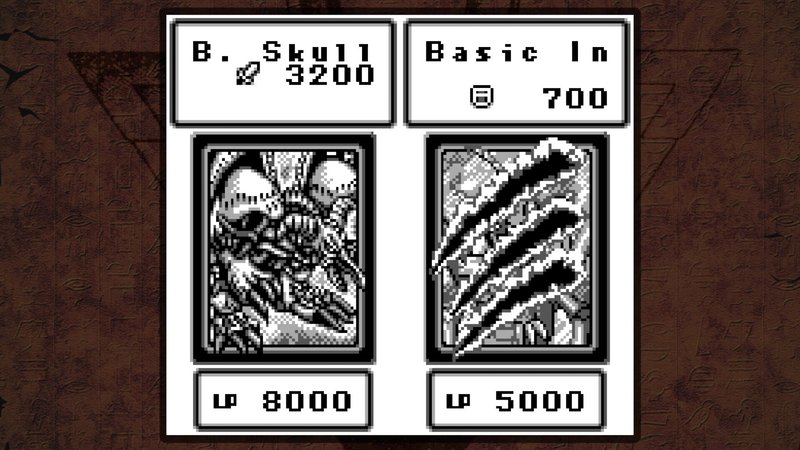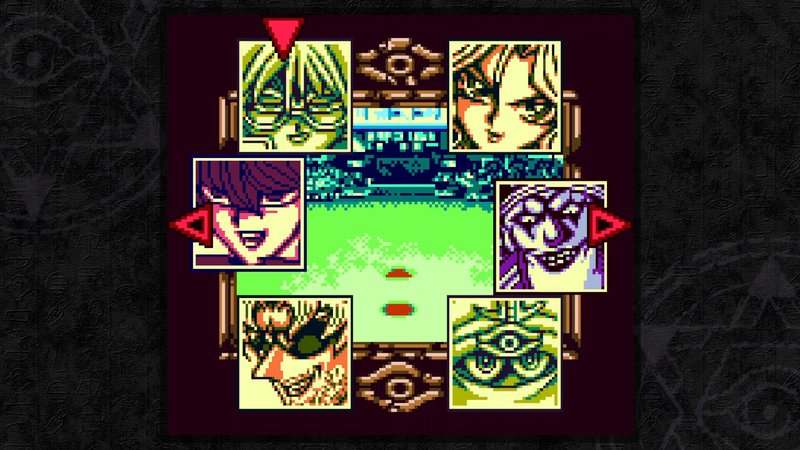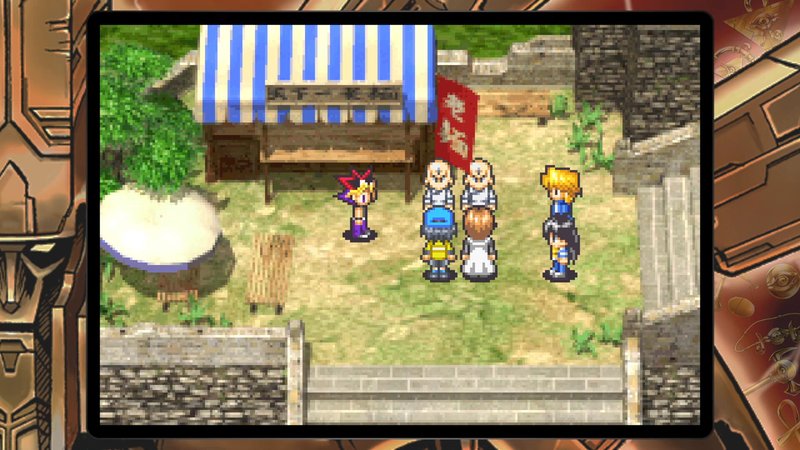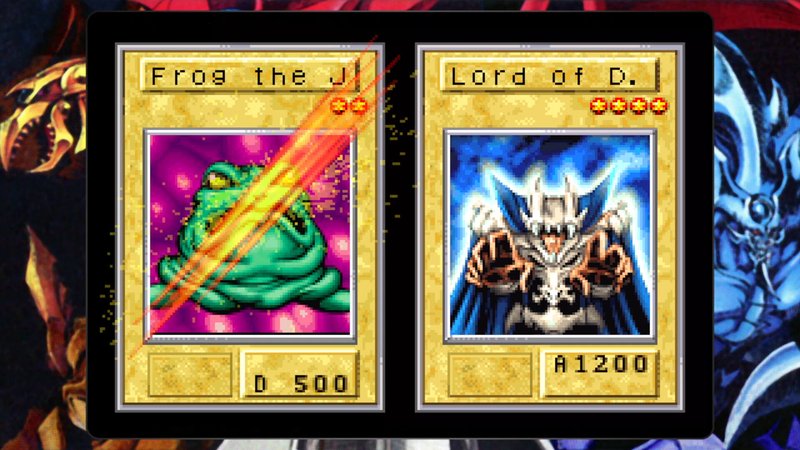Review: Yu-Gi-Oh! EARLY DAYS COLLECTION
Yu-Gi-Oh! EARLY DAYS COLLECTION: A Nostalgic Curio for the Discerning Collector
In the rarefied world of deckbuilding games, one occasionally encounters a release that defies conventional classification—a title that exists not as a contemporary contribution to the genre’s evolution, but rather as a historical document, preserved in digital amber. Such is the case with Konami and Digital Eclipse’s “Yu-Gi-Oh! EARLY DAYS COLLECTION,” a compilation that presents itself with all the pomp and circumstance of a museum exhibition, yet lacks the curatorial finesse one might expect from such an endeavor. At the princely sum of $49.99, one must interrogate whether this collection represents a meaningful addition to one’s digital library, or merely an expensive indulgence in nostalgia.
A Primitive Pedigree
The collection assembles fourteen titles from Yu-Gi-Oh!’s formative years, spanning from the monochromatic simplicity of the original Game Boy releases to the slightly more sophisticated Game Boy Advance era. What becomes immediately apparent is that these games represent not so much the evolution of deckbuilding as a genre, but rather the awkward adolescence of a franchise finding its footing in the digital realm.

The earliest entries, such as “Yu-Gi-Oh! Duel Monsters” and its immediate successor, present themselves with an almost charming primitiveness—their monochromatic interfaces and rudimentary mechanics standing as artifacts from an era when digital card games were in their infancy. The stark black-and-white presentation, with its dot-matrix font and simplistic card illustrations, evokes a certain nostalgic response, though I suspect this sentiment will be limited to those who experienced these titles during their original release.
As I meticulously documented my observations in my leather-bound notebook with my vintage Montblanc fountain pen, I couldn’t help but reflect on how these early attempts at translating a physical card game to a digital medium laid the groundwork for the sophisticated deckbuilders we enjoy today, though the mechanical depth on display here is decidedly… wanting.
Mechanical Considerations
From a ludological perspective, the collection presents a fascinating chronology of Yu-Gi-Oh!’s mechanical evolution. The earliest titles operate under rule sets that bear only passing resemblance to the game as it exists today, with later entries gradually introducing more familiar elements such as Tribute Summons, Fusion monsters, and an expanded implementation of Spell and Trap cards.

The strategic depth varies wildly across the collection. Early games offer little more than statistical comparisons between monster attack values, while later entries begin to introduce the beginnings of the complex card interactions that would eventually define the franchise. “Yu-Gi-Oh! The Eternal Duelist Soul” and “Yu-Gi-Oh! Worldwide Edition” represent the collection’s high-water mark in terms of mechanical sophistication, though they still pale in comparison to the strategic complexity of modern titles like “Slay the Spire” or the criminally underappreciated “Gordian Quest.”
Particularly egregious is the collection’s reliance on archaic progression systems. Many titles require players to defeat the same AI opponents repeatedly—often five times each—to advance through their campaigns, a design choice that feels positively medieval by contemporary standards. The grinding required to build competitive decks in certain titles is similarly antiquated, though Digital Eclipse has mercifully included options to remove deck capacity limits and unlock all cards immediately.
Aesthetic Considerations
Visually, the collection presents a fascinating archaeological record of pixel art evolution across multiple hardware generations. The monochromatic simplicity of the earliest Game Boy titles gives way to the more vibrant palette of the Game Boy Color era, culminating in the relatively sophisticated sprite work of the Game Boy Advance releases.

Environmental design across the RPG-styled entries reveals a certain charm in its economy of expression. Town areas and dueling arenas are rendered with the limited pixel counts available, yet manage to convey distinct atmospheres through careful color selection and spatial arrangement. The marketplace depicted above, with its blue and white striped awning and carefully positioned foliage, demonstrates how skilled pixel artists could suggest complexity through minimal means—a lesson that some modern “pixel-perfect” indies would do well to study.
The card artwork itself presents an interesting case study in adaptation. The original Yu-Gi-Oh! cards featured fairly detailed illustrations that had to be dramatically simplified for these early digital adaptations. The results vary from the nearly abstract to the surprisingly recognizable, though all are constrained by the technical limitations of their respective platforms.

The audio design, while not the collection’s focal point, ranges from the primitive bleeps and bloops of the Game Boy era to the more melodically complex compositions of the later titles. None will be winning awards for musical excellence, though they serve their purpose adequately within their historical context.
Quality-of-Life Enhancements
Digital Eclipse has implemented several modern conveniences to make these vintage titles more palatable to contemporary sensibilities. The ability to rewind gameplay, save states, and customize button mappings are welcome additions, though the implementation of these features feels somewhat perfunctory rather than transformative.
Particularly disappointing is the decision to include only a single save slot per game—an inexplicable limitation that seems almost deliberately antagonistic toward the modern player. Similarly vexing is the promise of online play for “Yu-Gi-Oh! Duel Monsters 4: Battle of Great Duelists,” with other titles to receive similar functionality “after release.” One cannot help but question whether such features will materialize, or if they will be quietly forgotten once the initial sales period has concluded.
The decision to include “Yu-Gi-Oh! Duel Monsters 6: Expert 2” in its original Japanese language, without localization, is particularly baffling. While I personally had no difficulty navigating its menus—having spent a semester studying at Kyoto University during my doctoral work—I imagine most Western players will find this title effectively inaccessible, rendering its inclusion somewhat pointless.
Value Proposition
The collection’s most significant failing lies in its value proposition. At $49.99, one expects a certain level of curatorial excellence and additional content to justify the investment. While the Digital Gallery offers some preserved box art and manuals, there is a conspicuous absence of developer interviews, historical context, or design documents that might have elevated this from mere compilation to genuine historical preservation.
The omission of certain fan-favorite titles, particularly “Yu-Gi-Oh! Forbidden Memories,” has been noted by the community as a significant disappointment. While I understand the complexities of licensing and emulation, its absence diminishes the collection’s claim to comprehensiveness.
Compared to other retro collections, such as Digital Eclipse’s own excellent “Atari 50: The Anniversary Celebration” or M2’s meticulous Sega Ages releases, the Yu-Gi-Oh! EARLY DAYS COLLECTION feels distinctly undercooked. The games are presented functionally but without the loving attention to detail that characterizes the finest examples of the retro compilation genre.
Conclusion
As I closed my leather-bound notebook and carefully capped my fountain pen after several days of rigorous analysis, I found myself contemplating the collection’s place in the broader deckbuilding landscape. These games are undeniably important from a historical perspective—they represent the digital genesis of what would become one of the world’s most successful trading card game franchises. However, their gameplay has aged poorly, and the collection itself does little to contextualize or celebrate their historical significance.
For devoted Yu-Gi-Oh! enthusiasts or scholars of gaming history, there is undoubtedly value here. The opportunity to experience previously Japan-exclusive titles or revisit childhood favorites may justify the price of admission for some. For the average deckbuilding enthusiast, however, these primitive ancestors of the genre offer little more than a curiosity, best observed briefly before returning to more sophisticated modern offerings.
In the final analysis, “Yu-Gi-Oh! EARLY DAYS COLLECTION” is a flawed yet occasionally fascinating time capsule—a collection that succeeds in preserving its subjects but fails to make a compelling case for why most players should experience them in 2025. Like many museum pieces, these games are perhaps better appreciated for what they inspired than for what they are.
Verdict: 5/10 – A nostalgic collection that preserves important pieces of gaming history, but at a premium price point that’s difficult to justify given the dated gameplay and minimal enhancements. Wait for a significant sale unless you’re a dedicated Yu-Gi-Oh! historian or overcome with nostalgia for these primitive digital card battlers.
Score
Overall Score: 5/10
Developer: Digital Eclipse
Release Date: Feb 27, 2025
Steam Page: Yu-Gi-Oh! EARLY DAYS COLLECTION